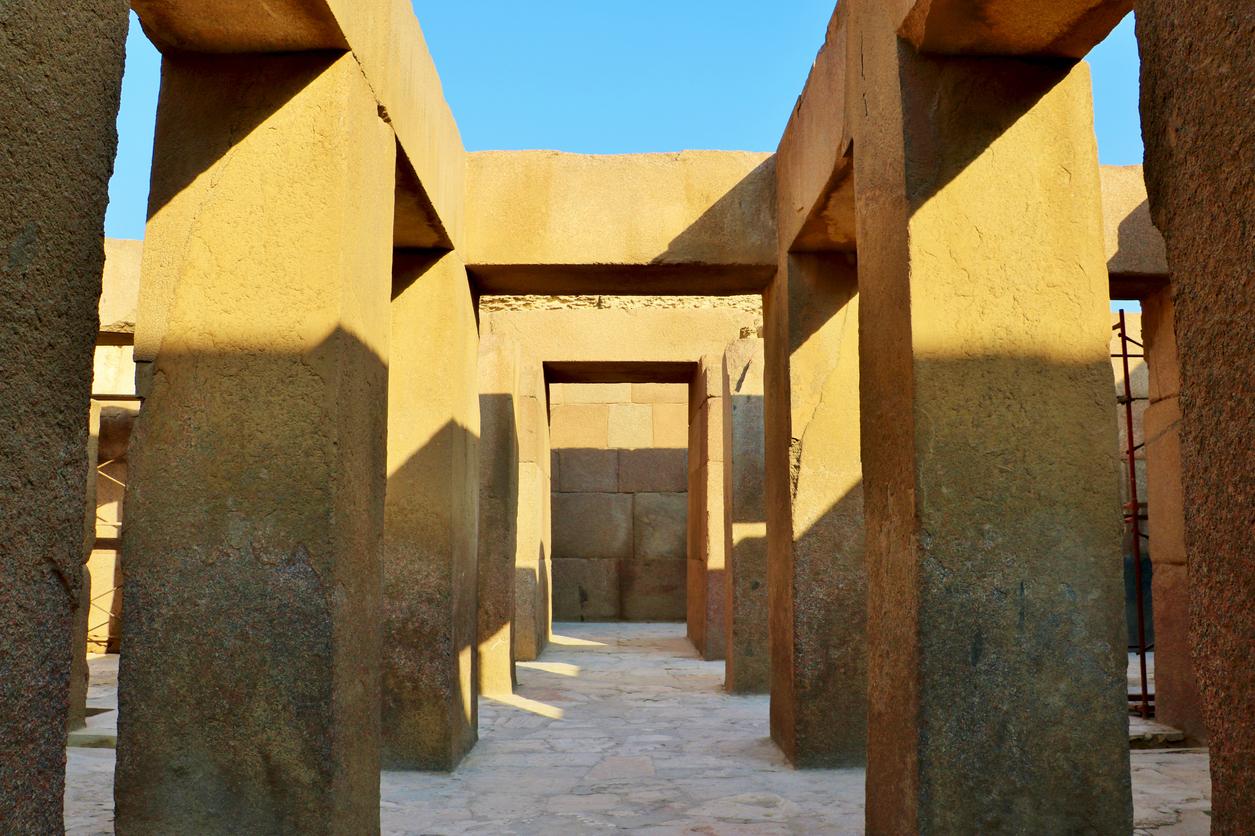
The Valley Temple of Khafre remains Egypt's best-preserved valley temple. Desert sand concealed this magnificent structure until the 19th century. Visitors today can experience the same massive limestone and granite structure that has stood strong for millennia.
This ancient Egyptian valley temple played a vital role in Egyptian burial practices as King Khafre's mortuary temple. The temple's original purpose included housing 23 of Khafre's statues that provided a sanctuary for the king's spirit. Pink Aswan granite blocks form the impressive structure, which spans 482 feet on each side. The main hall features a distinctive "T" shape with blocks joined in remarkable precision. This architectural masterpiece stands as one of Egyptian history's most important religious monuments.
The Valley Temple of Khafre is located at the Giza Plateau, just southeast of the Pyramid of Khafre and directly next to the Great Sphinx of Giza. It is part of the greater pyramid complex built for Pharaoh Khafre, who ruled during Egypt’s 4th Dynasty around 2,500 BCE. The temple is just a short drive from downtown Cairo, making it easily accessible for day-trippers and history lovers alike.
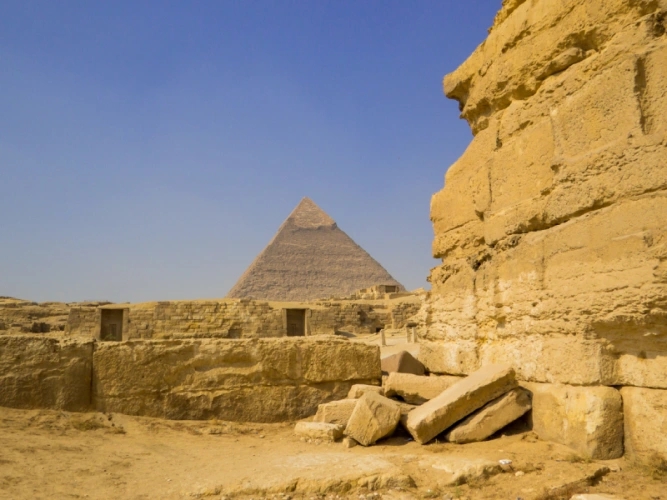
Ancient Egyptians saw valley temples as more than just architectural marvels ,they were sacred structures with deep spiritual meaning. These temples weren't just places for mummification as people once thought. Historical evidence shows they served as divine meeting grounds where dead kings could meet with visiting gods. The Abu Sir papyri clearly describes these divine visits, which reveals the temples' true spiritual purpose.
Valley temples emerged during Pharaoh Sneferu's reign and builders continued to create them until the end of the 12th Dynasty. These sacred buildings had special niches with statues of their owners throughout Egyptian history. The statues gave the pharaoh's spirit or "Ka" a permanent home.
The Valley Temple of Khafre played many religious roles in ancient Egyptian afterlife beliefs. The temple was where elaborate funeral ceremonies began and where priests performed vital rituals for the pharaoh's path to the next world. The temples linked the sacred pyramid complex to the Nile through canals, which showed the transition between life and death.
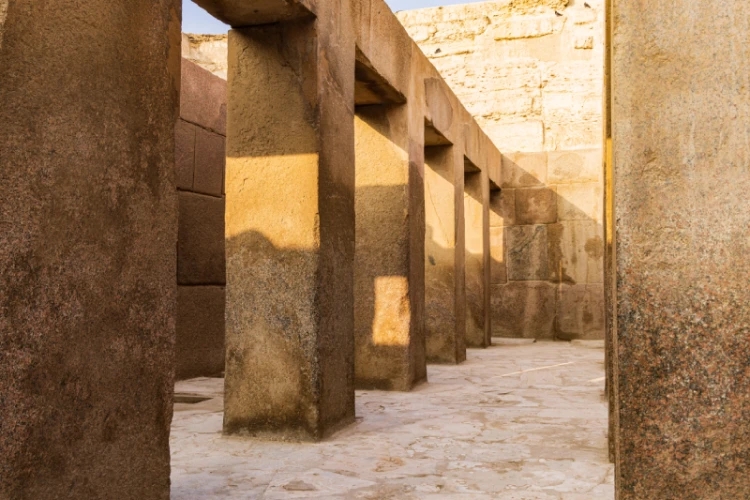
The Valley Temple of Khafre stands as an architectural masterpiece frozen in time. Its core consists of massive limestone blocks, while polished red-pink granite brought 500 miles downriver from Aswan quarries forms its outer layer.
A remarkable T-shaped hall defines the temple's carefully planned layout, with its stem pointing toward the pyramid. The imposing interior features sixteen monolithic square pillars made of solid granite that support massive architraves. Gleaming white alabaster floors create a stunning contrast against the dark granite walls.
The Valley Temple of Khafre features 23 shallow pits in its alabaster floor, each originally holding a statue of the pharaoh, with one larger pit likely designed for a double statue totaling 24 figures, possibly symbolizing the hours of the day and continuous ritual worship. Rich in symbolism, the temple’s dual entrances may represent the unity of Upper and Lower Egypt, a theme echoed in the famous diorite statue of Khafre discovered on-site where lotus and papyrus plants beneath the throne signify the unification of the two lands.

Desert sands buried the magnificent Valley Temple of Khafre for centuries, keeping its ancient secrets safe until modern times. This natural burial ended up being fortunate. The structure remained protected from weathering and human interference, making it the best-preserved valley temple in Egypt and a fascinating highlight on many Egypt Tours.
The temple was first noted in 1372 by Arab historian Ibn Abd al-Salam, with Arabic graffiti from that period still visible. In 1646, John Greaves observed the structure’s well-preserved condition. Giovanni Belzoni entered via the original northern entrance in 1818, finding an empty burial chamber. John Perring followed with a more detailed survey in 1837.
The Valley Temple of Khafre, uncovered by Auguste Mariette in 1852, is a remarkably well-preserved relic of Egypt's Fourth Dynasty, thanks to centuries of protection under desert sands. In 1858, Mariette discovered a striking diorite statue of Khafre beneath the temple floor, along with other statue fragments and niches 23 in total that once held images of the pharaoh. A larger niche may have symbolized the 24 hours of the day with a pair of statues. Though much of the original Tura limestone casing has eroded, the granite interior remains intact, offering modern visitors a powerful glimpse into ancient Egypt’s architectural and ceremonial grandeur.
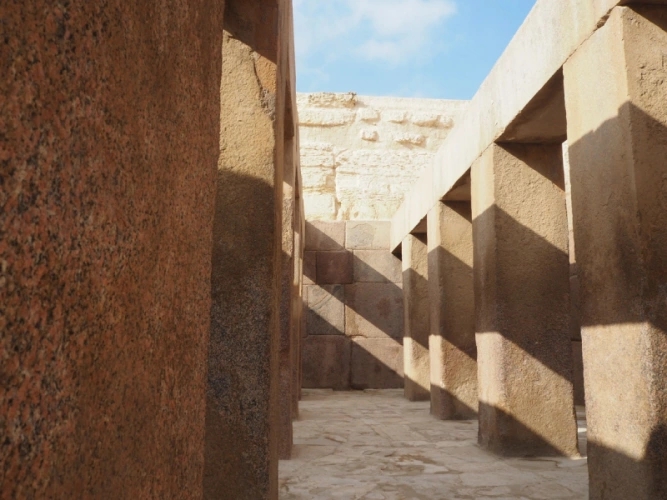
To make the most of your visit, plan accordingly:
Best Time of Year: Visit from October to April, when temperatures are milder (20–25°C / 68–77°F).
Avoid Summer: From June to August, the heat can reach over 40°C (104°F), making it difficult to walk and explore comfortably.
Best Time of Day: Go early in the morning to avoid crowds and enjoy cooler weather and better lighting for photos.
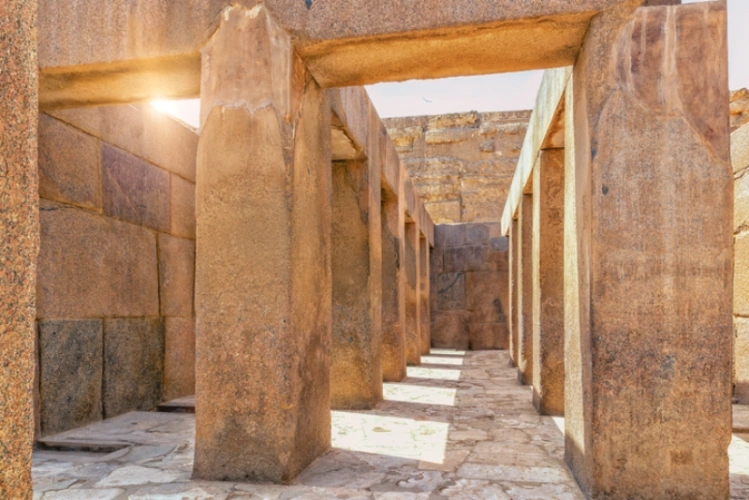
The Valley Temple of Khafre showcases ancient Egyptian engineering and spiritual devotion, with perfectly fitted granite blocks and a T-shaped design. Hidden beneath desert sands for centuries, it remains the best-preserved valley temple, offering a rare glimpse into Fourth Dynasty architecture. Serving as both a mortuary and sacred space, it hosted rituals like the "Opening of the Mouth" ceremony. The discovery by Auguste Mariette in 1852 revealed a temple that was a spiritual gateway, built with precision, symbolism, and eternal dedication.
Q1. What was the primary function of the Valley Temple of Khafre?
The Valley Temple of Khafre served as a sacred structure for religious ceremonies, particularly for the pharaoh's journey to the afterlife. It was used for purification rituals and as a starting point for elaborate funeral ceremonies.
Q2. How was the Valley Temple of Khafre constructed?
The temple was built using massive limestone blocks as its core, later covered with polished red-pink granite from Aswan quarries. The floor was paved with gleaming white alabaster, creating a striking contrast against the dark granite walls.
Q3. What unique features can be found in the Valley Temple of Khafre?
The temple features a T-shaped hall, 16 monolithic square pillars of solid granite, and 23 shallow pits in the alabaster floor that once held statues of Khafre. One pit appears wider, possibly accommodating a double statue.
Q4. How was the Valley Temple of Khafre rediscovered?
The temple remained hidden under desert sand for centuries until its rediscovery in modern times. French Egyptologist Auguste Mariette unearthed the sand-buried temple in 1852, making significant discoveries including a diorite statue of Khafre.
Q5. What symbolic elements are present in the Valley Temple of Khafre?
The temple incorporates various symbolic elements, including two entrances representing Upper and Lower Egypt, and statues of Khafre designed with optical illusions to express the pharaoh's unique position as both protected by gods and godlike himself.
Q6. What is the best time of year to visit the Valley Temple of Khafre?
The ideal time to visit is between October and April, when the weather is cooler and more pleasant for walking and exploring.
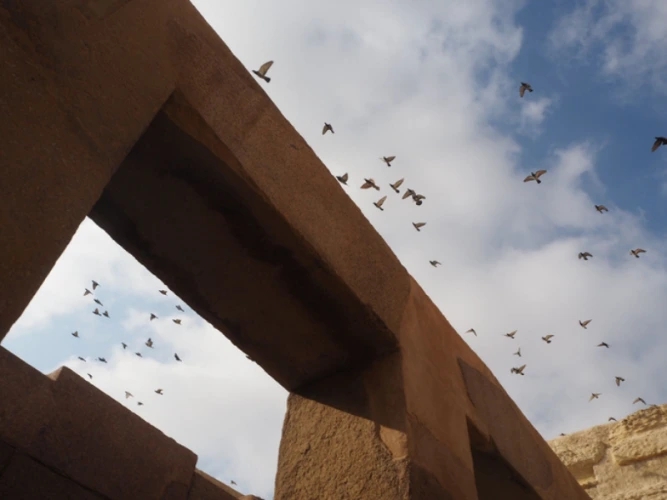

© Copyright 2025 Get Egypt Tour. All rights reserved.